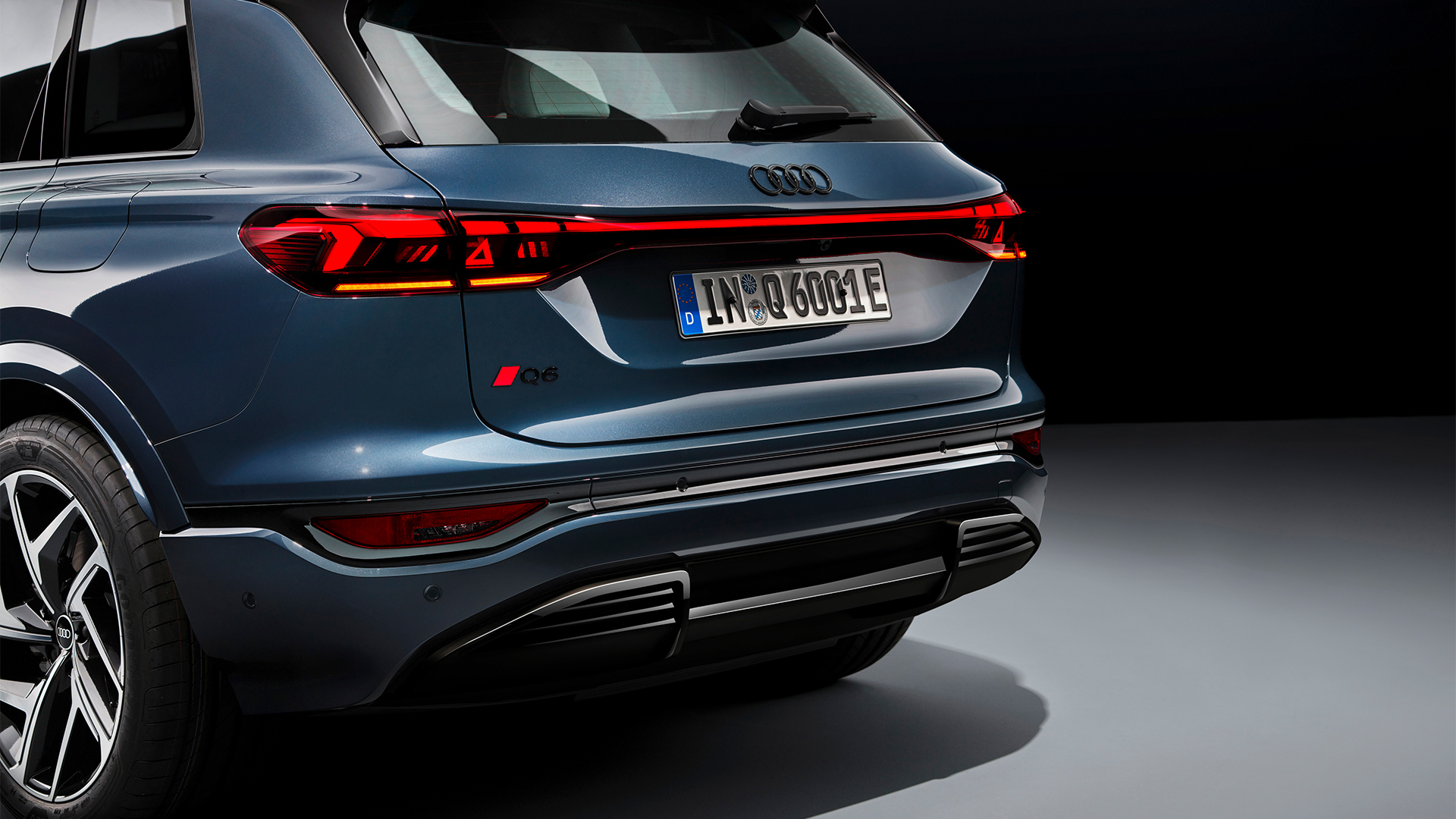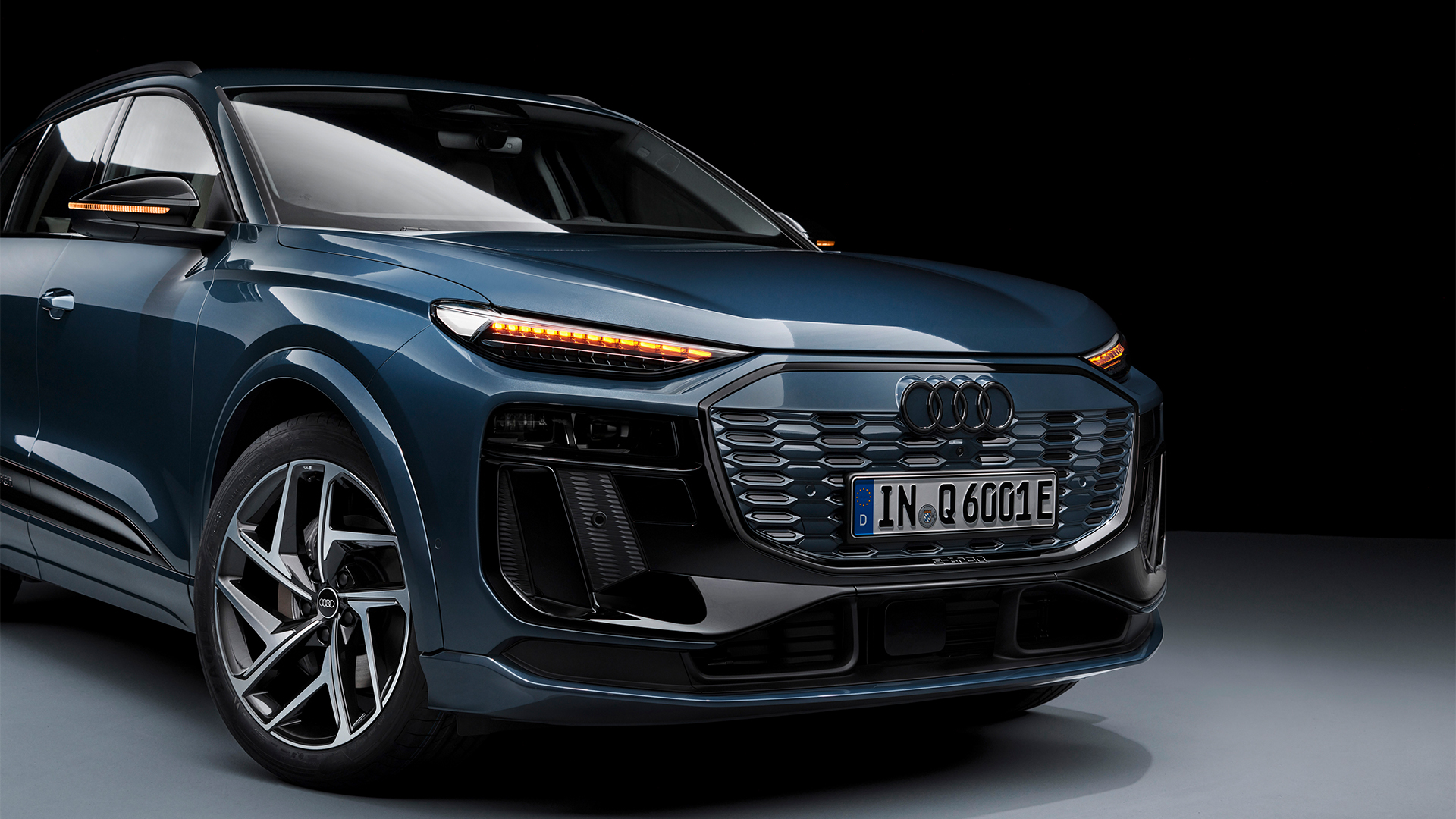
Audi has unveiled its latest all-electric SUV in the Q6 e-tron, the first of its kind to ride on the German marque’s Premium Platform Electric (PPE), but it's the innovative tail light tech that's destined to grab attention.
Dubbed Audi’s active digital light signature, these high-tech tail lights feature six OLED panels that are made up of some 360 segments that can generate a new image every 10 milliseconds using a "specially developed algorithm," according to the German carmaker.
Alongside the ability to strobe and shimmer upon entry and locking the vehicle, as well as an option for owners to personalize the overall light signature thanks to eight built-in designs, these lamps also serve a greater safety-conscious purpose.
According to Audi, the lights can "communicate with their immediate surroundings" for the first time on a production car. A proximity detector can tell if the driver following is getting a little too close and will subsequently flash up triangular warning symbols in an attempt to get their attention.

Although this might sound a bit rich coming from an Audi, considering the brand’s drivers have a reputation for getting a little too close to comfort in the outside lane of many motorways, the technology can also warn of breakdowns, accidents or lane blockages up ahead.
This is thanks to the fact that Audi’s constantly-connected MMI system can read live traffic data, pinpoint the vehicle’s exact location and then take automatic action if it feels motorists following behind need to be warned.
Currently, Audi is only able to display one symbol through its fancy new lights, and that’s a pair of red warning triangles, which the company says is a globally recognized symbol for hazards that's easily picked out, even at a distance.
During autonomous self-parking modes, the bottom of the red warning triangle drops out as a slightly softer way to warn pedestrians and other motorists that the vehicle is performing a maneuver.
According to Inside EVs, the innovation won’t be heading to the US any time soon, as legislation states that taillights need to be 'steady burning', meaning the morphing pattern formation is currently against the rules.
However, Audi went on to reveal that it's ploughing ahead with further light designs and functionality that it hopes will help its models communicate with the wider world.
Analysis: autonomous vehicles need a voice

Rewind almost a decade and I was sat in one of Nissan’s top secret studios in California, where a crack team was busy investigating and accelerating autonomous driving capabilities within the Renault Nissan Alliance.
Part of said team was studying ways in which fellow motorists and pedestrians interacted with vehicles that were eerily bereft of drivers. This team of behavioural scientists found that even the slightest, most subtle gestures or facial expressions from human motorists speak volumes when it comes to those waiting to cross roads or pull out from a T-junction.
The team concluded that future highly autonomous vehicles require some way of interacting with human beings, be it through LED displays, coloured lighting or a digital face if widespread adoption was the ultimate goal.
Audi’s work here builds on Nissan’s early research, as well as innovations from the likes of robotaxi firm Waymo, which uses external LED screens to warn cyclists and pedestrians when a passenger is opening a rear door.
The German marque has revealed that it plans to produce headlights that can display warnings in the near future, as well laser projection systems that can beam messages, symbols and more onto the street ahead - it is a case of convincing legislation to allow it, rather than waiting for the technology to catch up.
As we move towards an era where humans are relieved of driving duties, future vehicles will require innovative interactive features to ensure the smooth running of often congested urban environments.
After all, even the most accomplished EVs still aren’t capable of a smile, a wink or - occasionally - flipping the bird in protest.







